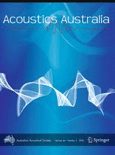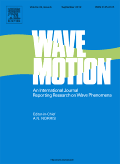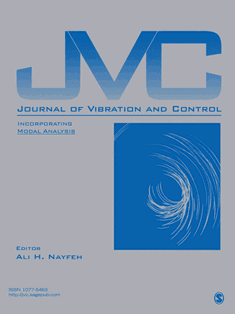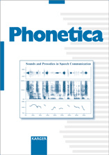
ACOUSTICAL PHYSICS
Scope & Guideline
Advancing Acoustics: Where Theory Meets Application
Introduction
Aims and Scopes
- Fundamental Acoustics:
Research addressing the fundamental principles of sound propagation, wave phenomena, and acoustic interactions in various media, including solids, liquids, and gases. - Applied Acoustics:
Studies focusing on practical applications of acoustics such as noise control, sound localization, and acoustic imaging in fields such as biomedical engineering, environmental monitoring, and industrial processes. - Ocean Acoustics:
Exploration of sound propagation in underwater environments, including studies on marine mammal communication, underwater noise pollution, and the impact of oceanographic factors on acoustic signals. - Nonlinear and Complex Acoustic Phenomena:
Investigations into nonlinear acoustic effects, such as shock waves, cavitation, and the interaction of acoustic waves with complex structures and materials. - Acoustic Materials and Devices:
Development and analysis of advanced materials and devices for sound manipulation, including piezoelectric transducers, acoustic filters, and metamaterials. - Signal Processing in Acoustics:
Research on algorithms and techniques for processing acoustic signals, including noise reduction, echo cancellation, and source localization.
Trending and Emerging
- Biomedical Ultrasound Applications:
There is a growing focus on the application of ultrasound in biomedical fields, including therapeutic ultrasound, imaging, and diagnostics, reflecting the increasing importance of non-invasive medical technologies. - Environmental Acoustics and Noise Pollution:
Research addressing the impact of noise pollution on ecosystems and human health is gaining traction, with studies exploring mitigation strategies and the acoustic monitoring of environmental changes. - Machine Learning and AI in Acoustics:
The integration of machine learning and artificial intelligence techniques in acoustic signal processing and analysis is trending, facilitating advancements in automated sound classification, localization, and diagnostics. - Acoustic Metamaterials and Novel Devices:
Innovations in acoustic metamaterials and devices designed for sound control and manipulation are emerging as a significant area of research, driven by advancements in material science and engineering. - Multimodal Acoustic Sensing:
A trend towards integrating acoustic sensing with other modalities (e.g., optical, thermal) for enhanced monitoring and diagnostics is evident, showcasing the interdisciplinary nature of current acoustic research.
Declining or Waning
- Traditional Noise Control Techniques:
There is a noticeable decrease in research dedicated to conventional noise control methods, as newer technologies and approaches are being developed, focusing more on active and adaptive noise control systems. - Static Acoustic Measurement Techniques:
Research emphasizing static or conventional measurement techniques for acoustic properties is waning, with a shift towards dynamic, real-time monitoring methods that leverage advanced sensor technologies. - Theoretical Models with Limited Practical Application:
While theoretical studies are essential, there is a declining interest in theoretical models that lack clear practical applications, as researchers increasingly seek studies that bridge theory with real-world applications.
Similar Journals

Akustika
Elevating Understanding of Sound Across DisciplinesAkustika is a premier journal dedicated to the field of acoustics and ultrasonics, published by STUDIO D-AKUSTIKA SRO in the Czech Republic. With an ISSN of 1801-9064, this journal provides a platform for cutting-edge research and development in acoustics, emphasizing advancements in both theoretical and practical applications. Although currently ranked in the Q4 category for Acoustics and Ultrasonics based on 2023 Scopus Ranks, the journal aims to foster growth and innovation within the community, offering invaluable insights for researchers, professionals, and students alike. It encompasses a wide-ranging scope that reflects the dynamic nature of acoustics, making it a vital resource for those engaged in this crucial field. With contributions dating back to 2012, Akustika is committed to promoting scientific dialogue and enhancing the understanding of sound in various environments.

Acoustics Australia
Fostering Collaboration for Acoustic AdvancementsAcoustics Australia is a prominent journal dedicated to advancing research and knowledge in the fields of acoustics and ultrasonics. Published by Springer Singapore Pte Ltd, this esteemed journal holds a Q2 ranking in the 2023 Scopus categories, reflecting its significant impact and reputation within the academic community, particularly evidenced by its position in the 67th percentile among its peers. Since its inception, with publication converging in years from 1986 to 1991 and again from 1996 to 2024, Acoustics Australia has been a vital platform for scholars to publish innovative research, share findings, and foster collaboration among professionals dedicated to the science of sound. Although not an Open Access journal, it remains an essential resource for researchers, academics, and students alike, providing insights that drive advancements in technology, environmental science, and health-related applications linked to acoustics.

WAVE MOTION
Connecting Mathematics and Physics Through Wave MotionWAVE MOTION is a premier scholarly journal published by Elsevier, dedicated to the interdisciplinary study of wave phenomena across various scientific domains. With an ISSN of 0165-2125 and an E-ISSN of 1878-433X, this journal has been a significant contributor to the field since its inception in 1979, continuing to expand knowledge in Applied Mathematics, Computational Mathematics, Modeling and Simulation, and Physics and Astronomy. Located in the Netherlands, WAVE MOTION ranks impressively within the top quartiles (Q2) of its categories, showcasing its influence and relevance, as evidenced by its Scopus rankings: #133 in Applied Mathematics and #51 in Computational Mathematics, among others. Although the journal follows a subscription-based model, its commitment to high-quality research makes it a valuable resource for researchers, professionals, and students alike. As it approaches its convergence years through 2024, WAVE MOTION remains a critical platform for the dissemination of innovative findings and theoretical advancements in wave motion studies.

Radiophysics and Quantum Electronics
Bridging Theory and Application in RadiophysicsRadiophysics and Quantum Electronics is a leading scholarly journal published by SPRINGER, dedicated to advancing knowledge in the fields of radiophysics and quantum electronics. With a rich publication history dating back to 1967 and covering anticipated insights up to 2024, the journal serves as a crucial resource for researchers engaged in the exploration of areas such as Astronomy and Astrophysics, Electrical and Electronic Engineering, and Nuclear and High Energy Physics. Although it is classified in lower quartiles in several categories, its ongoing commitment to quality research and critical advancements adds invaluable knowledge to the scientific community. The journal does not currently offer open access options, allowing for traditional publication standards that uphold rigor and academic integrity. Researchers, professionals, and students alike can benefit from the comprehensive articles and studies published within its pages, making Radiophysics and Quantum Electronics an essential addition to any academic library focused on the nuances of modern physics and engineering.

Romanian Journal of Acoustics and Vibration
Innovating insights in acoustics and vibration since 2012.Welcome to the Romanian Journal of Acoustics and Vibration, a pivotal publication produced by the Romanian Society of Acoustics, dedicated to advancing knowledge in the realms of acoustics and vibration research. With an ISSN of 1584-7284, this journal has been a vital resource for researchers, professionals, and students alike since its inception in 2012 and will continue to publish insightful contributions until 2024. The journal's rigorous selection process and scholarly articles ensure a high standard of research, contributing significantly to the Q3 and Q4 rankings in acoustics and ultrasonics as well as mechanics of materials, respectively. Although currently not an open-access journal, it provides invaluable insights into the latest developments and techniques within the fields of acoustics and vibration. Join a vibrant community that fosters innovation and scholarly dialogue, helping to shape the future of these crucial scientific disciplines.

JOURNAL OF VIBRATION AND CONTROL
Elevating Engineering Standards through Vibrational ScienceJOURNAL OF VIBRATION AND CONTROL, published by SAGE PUBLICATIONS LTD, is a distinguished peer-reviewed journal that serves as a pivotal resource for researchers and professionals in the fields of aerospace, automotive, materials science, and mechanical engineering. Since its inception in 1995, this journal has been instrumental in disseminating cutting-edge findings on the dynamics of vibrations and control systems, addressing both theoretical developments and practical applications. With an impressive array of impact metrics—ranking in the top quartile (Q2) across various engineering categories—it ensures that high-quality research is accessible to its audience, fostering innovation and collaboration. Although currently not an open-access journal, it remains influential within its domain, indexing a breadth of topics that bridge fundamental science and engineering practices. Researchers and students interested in exploring the dynamics of materials and structures will find the JOURNAL OF VIBRATION AND CONTROL an invaluable tool for advancing their knowledge and contributing to ongoing discussions in the field.

Physics of Wave Phenomena
Exploring the Dynamics of Waves in PhysicsPhysics of Wave Phenomena is an esteemed journal published by PLEIADES PUBLISHING INC, dedicated to advancing the understanding and research of wave-related phenomena across various physical contexts. Established in 2009, it has forged a reputation within the realm of Physics and Astronomy, most recently ranking in the Q3 category according to Scimago's metrics, reflecting its commitment to quality and relevance within the global scientific community. The journal's systematic exploration of wave dynamics, propagation, and interactions provides a vital platform for scholars, mathematicians, and practitioners seeking to disseminate their findings and engage with cutting-edge advancements in the field. With an evolving scope that embraces both theoretical and experimental studies, Physics of Wave Phenomena effectively serves as an essential resource for knowledge exchange, ensuring accessibility to the latest research trends, despite not currently adopting an open-access model. Indispensable to researchers and students alike, this journal plays a pivotal role in enriching the academic discourse within physics and related interdisciplinary fields.

PHONETICA
Connecting Acoustic Science with Linguistic TheoryPHONETICA, published by De Gruyter Mouton, is a premier journal specializing in the interdisciplinary study of phonetics, phonology, and their applications in linguistics and acoustic sciences. With an impressive scope covering critical aspects of acoustics and language, PHONETICA has established itself as a leading platform for innovative research since its inception in 1957, continuing through to 2024. The journal boasts a significant impact, reflected in its esteemed Q1 ranking in both Acoustics and Ultrasonics and Linguistics and Language categories as of 2023, positioning it in the top quartile of scholarly journals in its field. PHONETICA's rigorous publication standards attract a diverse array of researchers and professionals, eager to disseminate their findings in an engaging and scholarly environment. Although not open access, the journal remains a vital resource for those seeking to deepen their understanding and contribute to the evolving dialogue in phonetic research.

APPLIED MATHEMATICS AND MECHANICS-ENGLISH EDITION
Empowering Research with Cutting-Edge Mathematical ApplicationsApplied Mathematics and Mechanics - English Edition is a prestigious journal published by Shanghai University, focusing on the interdisciplinary applications of mathematics and mechanics across various scientific and engineering domains. With an ISSN of 0253-4827 and an E-ISSN of 1573-2754, this journal has established itself as a vital resource since its inception in 1980, extending its coverage well into 2024. The journal boasts impressive Scopus rankings—placing it in the top 10% of the Applied Mathematics category and the top 20% in Mechanical Engineering and Mechanics of Materials—reflecting its significant impact and contribution to research. Currently categorized in the Q2 and Q1 quartiles, it caters to a diverse audience that includes researchers, professionals, and students seeking to explore cutting-edge developments and innovative methodologies in the field. Although the journal is not open access, it remains committed to disseminating high-quality research that addresses contemporary challenges in applied mathematics and mechanics, fostering a deeper understanding of their practical implications.

ACTA ACUSTICA
Elevating Acoustic Research: Your Open Access ResourceACTA ACUSTICA, published by EDP SCIENCES S A, is an esteemed open access journal dedicated to advancing the fields of Acoustics and Ultrasonics, Computer Science Applications, Electrical and Electronic Engineering, as well as Speech and Hearing. Since its transition to open access in 2020, this journal has provided a platform for high-quality research that is freely accessible to scholars, practitioners, and students alike. With a respectable categorization in Q3 across multiple disciplines as of 2023, it reflects the ongoing commitment to disseminating relevant findings and innovations within these fields. Researchers interested in meaninful contributions to acoustic science will find ACTA ACUSTICA to be an invaluable resource that encourages collaboration and knowledge sharing, thereby fostering advancements that resonate across academia and industry. The journal aims to publish results that enhance understanding of sound phenomena and their applications, positioning itself as a pivotal channel for academic discourse.